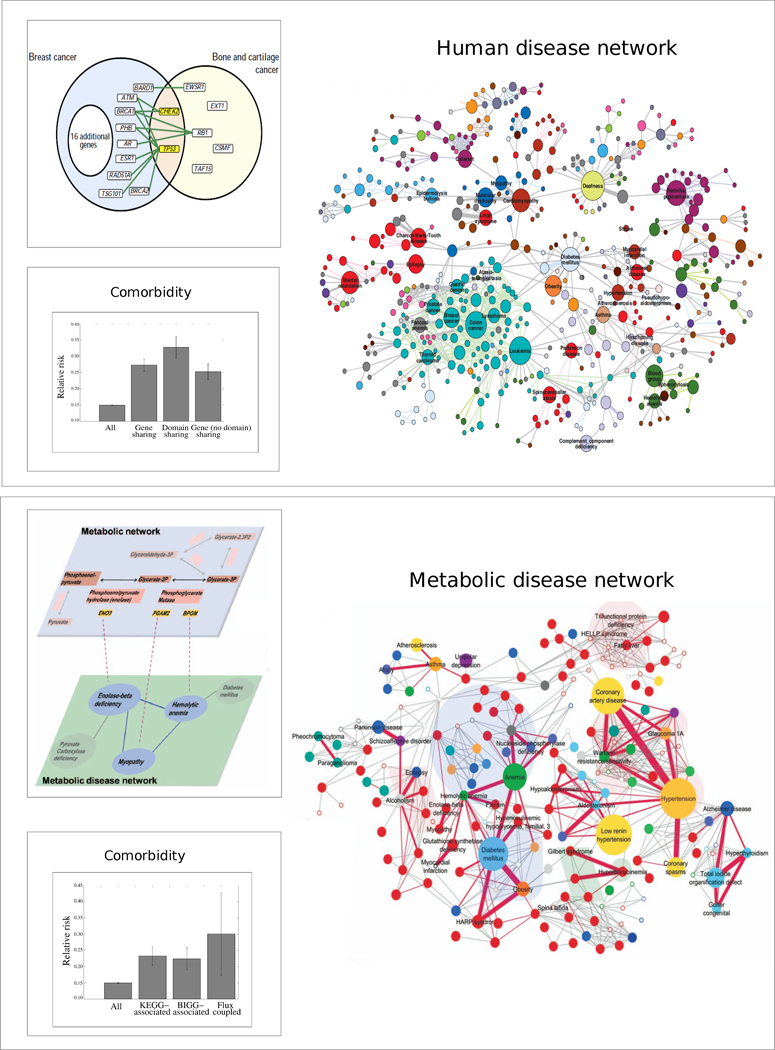Figure 5. Disease networks.
(a) Human Disease Network, whose nodes are diseases; two diseases being linked if they share one or several disease-associated genes, as shown in the example involving breast cancer and bone and cartilage cancer64. The large panel shows the giant cluster of the obtained disease network. Not shown are small clusters of isolated diseases37. Node color reflects the disease class of the corresponding diseases to which they belong, cancers appearing as blue nodes and neurological diseases as red nodes. Node size correlates with the number of genes known to be associated with the corresponding disease (after ref.37). The left panel shows the comorbidity between diseases linked in the HDN measured by the logarithm of relative risk, indicating that if the disease-causing mutations affect the same module of the shared disease protein, then the comorbidity is higher64. (b) Metabolic Disease Network, linking two diseases if they are both associated with enzymes and if these enzymes catalyze reactions that share a metabolite (after ref.67). The comorbidity between metabolically linked diseases is higher than those that are not connected, and diseases whose enzymes catalyze reactions that are coupled with each other at the flux level show even higher comorbidity (bottom left panel).

